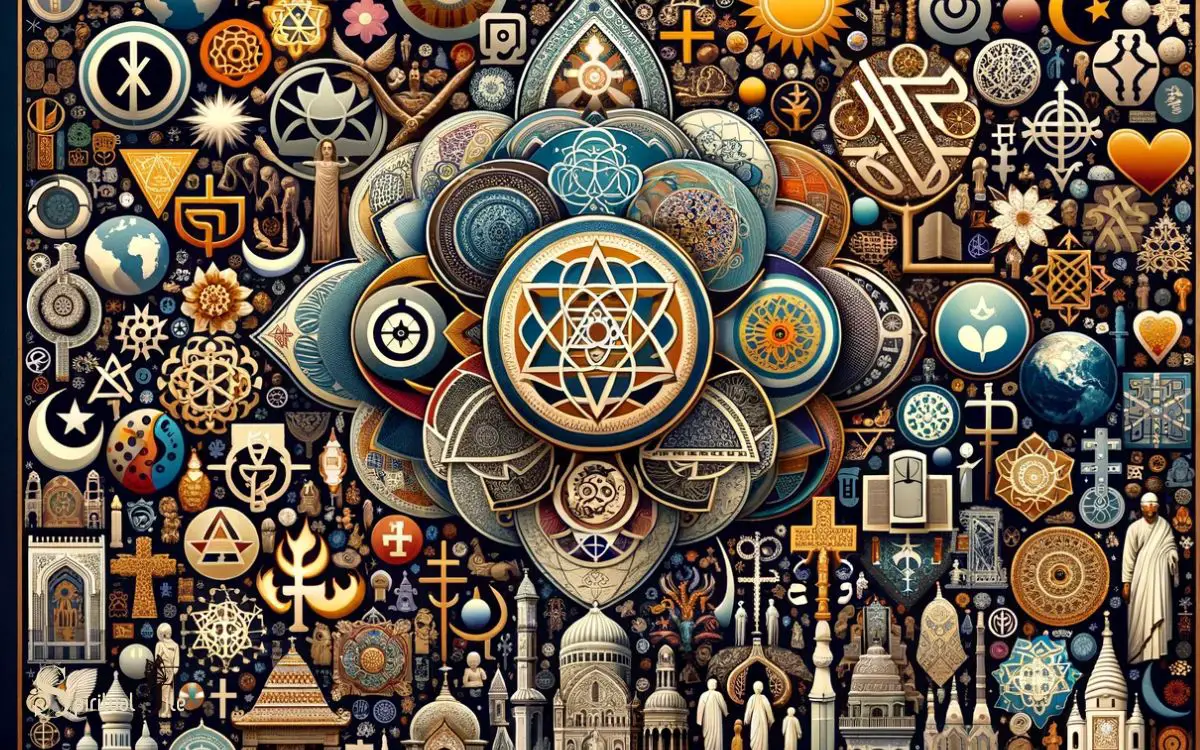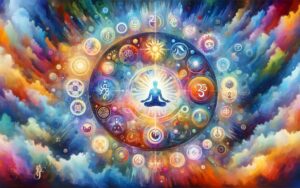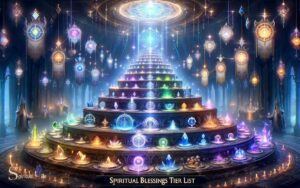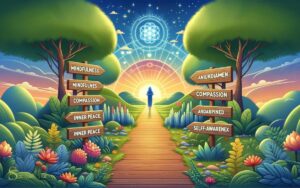List of Religions and Spiritual Traditions: Traditions!
Hey there! We’ve put together a list of religions and spiritual traditions that covers a wide array of beliefs and practices. Did you know that there are over 4,300 recognized religions in the world?
We’ve organized this list into different categories, such as Abrahamic Religions, Dharmic Traditions, Indigenous Spiritual Paths, African Traditional Religions, New Religious Movements, East Asian Religions, and Pagan and Earth-Centered Traditions.
Our goal is to provide a comprehensive overview for anyone interested in learning about the diverse range of religious and spiritual beliefs found across the globe.
So, whether you’re exploring different faiths or simply seeking to broaden your understanding, we’ve got you covered!

Key Takeaway
Abrahamic Religions
When we consider the Abrahamic religions, it is important to acknowledge their shared historical and theological roots. Christianity, Islam, and Judaism all trace their origins back to the prophet Abraham, making them closely interconnected.
These religions share fundamental beliefs in one God, ethical principles, and a focus on spiritual growth. Despite the differences in practice and interpretation, there is a common thread of monotheism and a reverence for the teachings of Abraham.
Understanding the shared heritage of these religions can foster mutual respect and peaceful coexistence.
It is crucial to recognize that while there are distinct theological differences among the Abrahamic faiths, they also offer opportunities for interfaith dialogue and cooperation, promoting harmony and understanding in an increasingly diverse world.
Dharmic Traditions
Acknowledging the shared historical and theological roots of Abrahamic religions, we find Dharmic traditions embodying diverse spiritual practices and philosophies.
Dharmic traditions, originating in the Indian subcontinent, encompass a wide range of belief systems and practices, including Hinduism, Buddhism, Jainism, and Sikhism.
These traditions emphasize concepts such as karma, dharma, and moksha, and promote the pursuit of self-realization and liberation. Dharmic traditions also advocate for non-violence, compassion, and the interconnectedness of all living beings.
Additionally, they encompass various spiritual paths and practices, from meditation and yoga to rituals and devotional worship.
Understanding Dharmic traditions involves delving into their intricate philosophical systems and embracing the richness of their cultural expressions.
Indigenous Spiritual Paths
Continuing from the previous subtopic, we now delve into ‘Indigenous Spiritual Paths’, exploring the diverse and unique belief systems rooted in specific regions and cultures.
Indigenous spiritual paths encompass a wide array of traditions, often closely connected to the land, nature, and community. These belief systems are deeply intertwined with cultural practices, folklore, and rituals, shaping the spiritual outlook of indigenous peoples around the world.
From the Native American traditions in the Americas to the Aboriginal Australian spirituality, each indigenous spiritual path reflects a profound respect for the environment and a deep understanding of the interconnectedness of all living beings.
It’s important to approach these spiritual paths with reverence and an open mind, recognizing the wisdom and rich heritage they offer to humanity.
African Traditional Religions
African Traditional Religions encompass a diverse array of spiritual beliefs and practices rooted in the cultures and traditions of various African societies.
These religions are often characterized by a deep connection to nature and the spiritual world, as well as a strong emphasis on ancestor veneration and rituals.
Here are three key aspects of African Traditional Religions:
- Ancestor Worship: Ancestors are revered and play a central role in the spiritual life of the community.
- Rituals and Ceremonies: Various rituals and ceremonies are performed to honor the spirits and seek their guidance and blessings.
- Oral Tradition: The transmission of religious knowledge and traditions often occurs through oral storytelling and folklore.
The rich diversity and profound significance of African Traditional Religions contribute to their enduring presence in many African societies. As we explore the spiritual landscape, it’s important to also consider the emergence of ‘new religious movements’.
New Religious Movements
New Religious Movements encompass a wide range of spiritual and religious belief systems that have emerged in modern times, reflecting the evolving landscape of human spirituality.
These movements often challenge traditional religious norms and offer new perspectives on faith and practice.
They may draw inspiration from existing religions, combine elements from different traditions, or introduce entirely novel doctrines.
Here’s a table showcasing a few examples of New Religious Movements:
| New Religious Movements | Founding Year |
|---|---|
| Scientology | 1954 |
| Thelema | 1904 |
| Eckankar | 1965 |
| Raelism | 1974 |
| Cao Đài | 1926 |
These movements vary widely in their beliefs, practices, and impact on society, contributing to the diverse tapestry of contemporary spirituality.
As we transition to the subsequent section about ‘East Asian Religions’, it’s important to recognize the dynamic nature of religious expression in the modern world.
East Asian Religions
East Asian Religions encompass a diverse array of spiritual traditions and belief systems originating from countries such as China, Japan, Korea, and Vietnam. These traditions have deeply influenced the cultural, social, and philosophical landscapes of East Asia for centuries.
The following are three prominent East Asian religions:
- Confucianism: This ethical and philosophical system, founded by Confucius, emphasizes the importance of personal and governmental morality, correctness of social relationships, justice, and sincerity.
- Taoism: Originating in China, Taoism emphasizes living in harmony with the Tao, which is often translated as “the way.” It advocates simplicity, spontaneity, and living in accordance with nature.
- Shinto: This indigenous religion of Japan centers around the veneration of kami, which are spirits or phenomena that are worshipped in Shinto, and the belief in the connectedness of present-day Japan to its ancient past.
Pagan and Earth-Centered Traditions
Pagan and Earth-Centered Traditions’ practices encompass a wide range of belief systems centered on nature and the interconnectedness of all living beings. These traditions often focus on honoring the Earth, natural cycles, and the divine feminine.
Many of these practices are rooted in ancient traditions and are often polytheistic, meaning they recognize multiple deities.
Here’s a table summarizing some of the diverse Pagan and Earth-Centered Traditions:
| Tradition | Beliefs | Practices |
|---|---|---|
| Wicca | Worship of nature deities, magic practice | Rituals, spells, honoring the elements |
| Druidry | Reverence for nature, Celtic deities | Rituals, nature walks, storytelling |
| Heathenry | Norse mythology, honor gods and ancestors | Blóts (sacrificial offerings), rituals |
| Shamanism | Spiritual connection with nature, spirits | Journeying, rituals, healing practices |
These traditions offer a deep connection to nature and a profound respect for all living beings.
Conclusion
In our exploration of diverse religious and spiritual traditions, we have found beauty in the Abrahamic religions, wisdom in the Dharmic traditions, connection to the earth in Pagan and Earth-Centered paths, and deep spirituality in Indigenous and African traditions.
Embracing the richness of these traditions allows us to find common ground and understanding, leading to a more harmonious and interconnected world.






